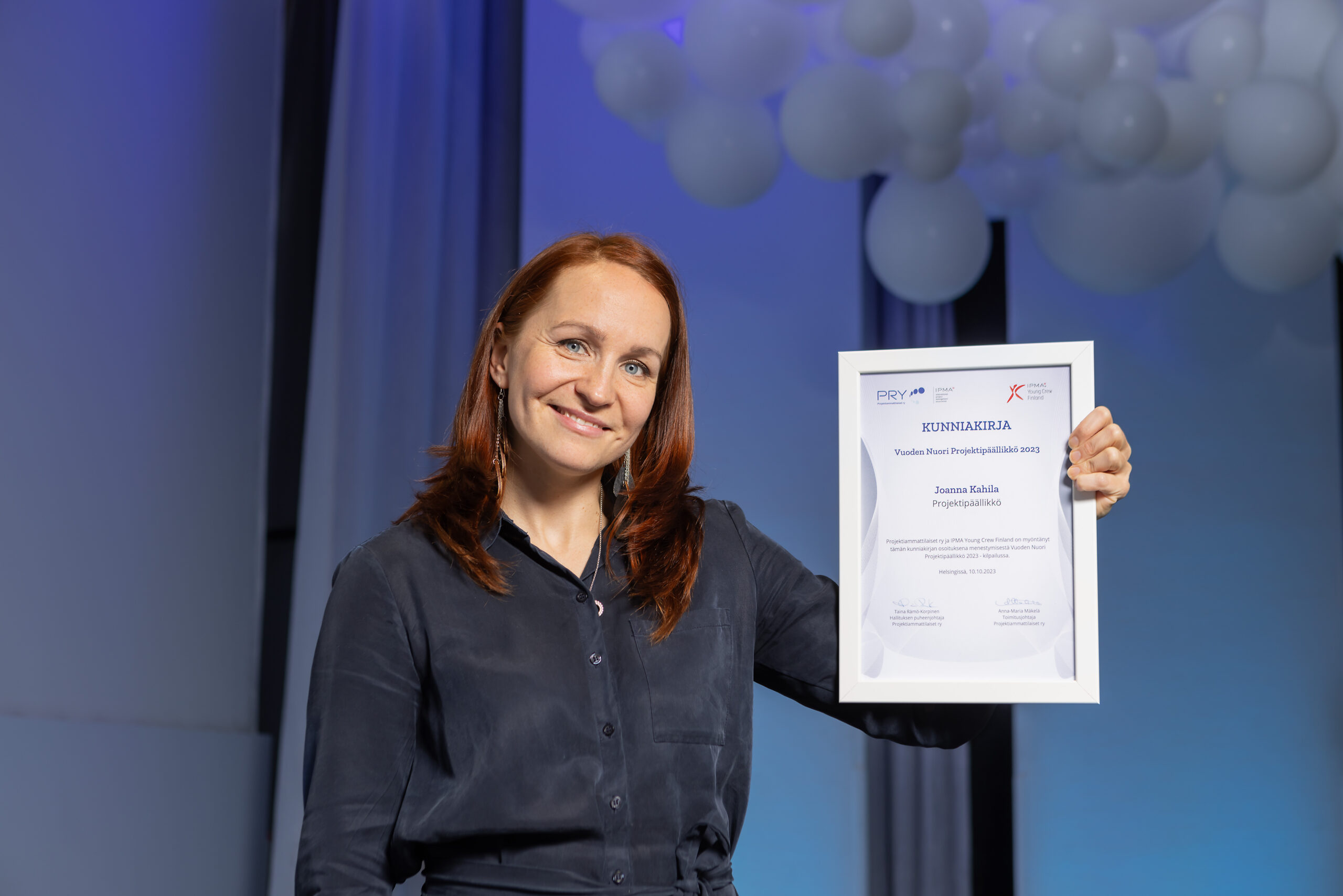The second in a series of project workshops on artificial intelligence (AI) was held at Kakola in Turku on 24-25 October 2024.I also had the opportunity to attend the first workshop at the same location in spring 2024. A lot has happened in the meantime, although it has been less than six months since the last workshop. The spring workshop was still largely “AI hype” and a run-through of how AI could be used, how broad language models (LLMs) work and what could be done with these tools in the future. In this workshop, we already got a huge dose of concreteness and saw how the systems really work and how the project manager can benefit from them.
PRY had very experienced AI experts Timo Nurmi from Post and Tero Ojanperä from Silo AI as speakers. Here are some insights and highlights from the days
Text by Teppo Valkama
Photos by Teppo Valkama

The Kakola Workshop once again gathered a full hall of project professionals interested in AI.
Reimagining traditional applications with artificial intelligence
One of the key insights of the workshop was about a fundamental change in the way applications are developed and used. Traditionally, applications follow a simple formula: data + application = outcome. However, in the world of AI, this paradigm is reversing. AI applications are built on the principle of data + outcome = application. This means that AI systems learn from vast amounts of data and create applications for desired outcomes that can make predictions and decisions autonomously.
Artificial intelligence for project management

The potential of AI is sure to revolutionise project management. AI tools can improve efficiency and decision-making by automating tasks such as scheduling, resource allocation, risk management and performance monitoring. By analyzing data, AI can provide valuable insights and recommendations, enabling project managers to make informed decisions and optimize project outcomes. These changes will alter processes, changed processes will change job descriptions, and new job descriptions will require changes to the skills and capabilities required. So it is not just a technological change, but the impact is perhaps wider and bigger than we can yet imagine at this stage. What is certain is that the change will be huge but it is not yet clear exactly which things will change and on what timescale. It is not technological developments that are slowing things down, but the lack of preparation for change in organisations and the ability of project managers, and people in general, to adapt to change. I am convinced that in the words of NVIDIA’s CEO: “AI is not taking your job. The person who uses AI is taking your job”, contains a grain of truth.
The best applications of AI
AI excels at tasks involving large amounts of data and complex patterns, making it ideal for areas such as natural language processing, image recognition, predictive analytics and automation.
Project management typically involves a lot of data and managing the dependencies of this data is complex. In larger projects and projects, it is almost impossible to keep track of all the necessary discussions and issues that are on the surface today. I believe that the first immediate benefits will come from transforming project management reporting into up-to-date snapshot management. It is still quite typical today to transfer data from operational systems into PowerPoint, Word or PDF format for reporting. Conceptually speaking, we transfer data from where the most up-to-date information is, to media that are not updated. The end result is that reports contain outdated information. In a snapshot, data is taken from where the most up-to-date information is. Instead of static media, automating the processing of information and using AI to analyse, visualise and summarise information to the essentials is the key to good efficiency, better communication and rapid decision-making.
What should AI be used for?

So in what situations is AI useful in practice? Where AI produces as good quality as a human, automate and use AI as an assistant if it does not produce sufficient quality. Use the time freed up by the AI for new tasks, those where the human produces better quality. And in particular, constantly monitor what is happening in the development of AI. Change is really fast.
How should you prepare for change?

The first thing is to become familiar with AI and the tools that apply it. This happens on a personal level. Chat GPT and CoPilot are good examples of this. Other interesting applications also emerged during the workshop, the most interesting of which included Napkin.ai, which streamlines communication and turns text into visuals, as well as speeding up the creation of communication materials and enhancing its impact through visualisation.
Another interesting application is Claude.ai, which analyses and “understands” images and documents. For example, it allows you to ask a specific question about the content of a large document in a chat-like way and receive a chat-like response.
Of course, there are many other apps and a word of warning: always remember security and privacy when using any AI app you find online. Know what you are doing!
Simply using personal AI is not enough. Organisations need to prepare for change in a holistic way. At the very least, the following should be taken into account:
- Competences: adequate training for staff
- Data strategy: what data will be used and how it will be made available to AI tools
- Tools: the world is now full of tools, but organisations need to choose which tools to use and ensure their secure and licensed use
- Processes: actively changing processes to get the necessary benefits from AI and leading the change in job profiles and required skills.
- Information security: information security issues must be ensured and taken into account in training, policies and guidelines
- Support: a PMO-type support for the large-scale deployment of AI (AiMO) must be organised
The Kakola AI workshop provided a comprehensive overview of the current state of AI in concrete terms and the future potential of how AI applications can be used in project activities. Through the insights of industry leaders such as Timo Nurmi and Tero Ojanperä, participants gained a deeper understanding of how AI can be used – now the ball is in our court as project managers on how to apply the new knowledge we have learned.
This article was written with the help of AI – of course!
What the heck is Kakola workshop?

PRY has a long-standing tradition of Project Days in Helsinki and 3PMO in Tampere, which have been both well-known and popular for years. A couple of years ago, Joxi had the idea to organise a workshop-style two-day event for about 40 people in the Turku area and invite Reinhard Wagner, a top expert in portfolio management from Germany, to facilitate the event.
That’s where the idea came from! We chose April as the date, as it was conveniently sandwiched between our other big events and also a new way to offer our members and other interested parties new content in the field of project management.
Well, why Kakola then? First of all, we were looking for a place in one of the so-called chain hotels’ meeting rooms and we already asked for a few offers. And we said “boring, no point”. Until, Anna-Maria, as a former Turku resident, realised that “Hey, Kakola could be an interesting place!” And from words to deeds. Anna-Maria visited the place, which was of course already familiar as a hotel; the old legendary prison had been renovated into a hotel and offered the perfect setting for the event. The usual meeting facilities are all right in Kakola, but who has ever been to a projection event in a church hall with a pulpit, organ and a magnificent altarpiece with altar dates? The setting is therefore the most stunning and certainly the most special for a workshop. Kakola became a legend in its own right and now three Kakolas have already been celebrated and more are to come! Stay tuned and follow the PRY events calendar. Kakola is worth coming to not only for the content, but also for the exceptional setting. Not forgetting the networking!
Anna-Maria Mäkelä
Author:



